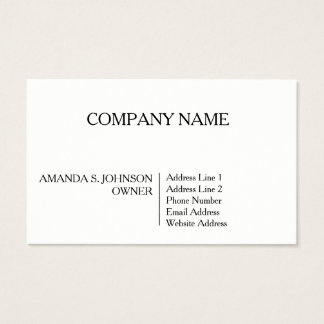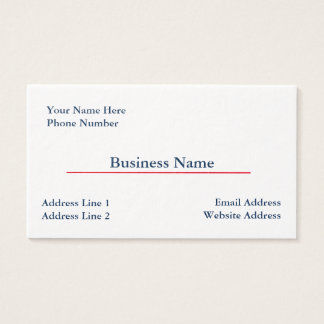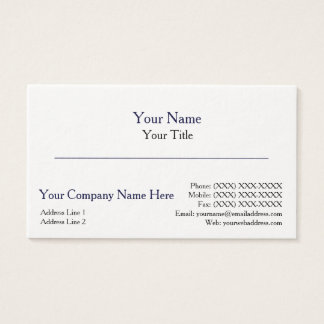It is important to note that the goal of the government is to get these loans into the hands of small business owners as quickly as possible, in order to keep them going and be able to continue paying their employees. The loans are meant to address the loss in sales and ability to operate along with the corresponding inability to pay employees, rent, and other costs of doing business due to the pandemic. To that end, the SBA is trying to ease previous requirements for securing loans and attempting to make the process as simple as possible.
There are currently two types of loans available: Economic Injury Disaster Loans (EIDL) and Paycheck Protection Loans (PPP). You can apply for both loans, but you can’t use funds from each loan for the same expenses such as payroll, rent, insurance, etc.
Here are 10 things you need to know about the loan programs:
If you are a business with under 500 employees, you are considered a small business (with some exceptions) and can qualify for the loans. Nonprofits and veterans’ organizations also qualify. All 50 states have been declared disaster areas and, therefore, no matter where your company is based, you may apply.
The EIDL loans offer up to $2 million for working capital needs such as fixed debt and payroll. You apply for the EIDL loan on the SBA website www.sba.gov/disaster. The interest rate is 3.75% for businesses and 2.75% for nonprofits with a 30-year term possible. There is an automatic one-year deferment on repayment so the first payment is not due for a full year, although interest begins to accrue at time of disbursement.
If you apply for an EIDL loan, you can request a $10,000 grant for working capital. Don’t forget to check the box requesting the grant! The requirements for the application have also been scaled down and no additional documentation such as tax returns or personal financial statements are required when submitting the application. The SBA claims you will receive this grant within three days of the application filing, whether or not you ultimately qualify for a loan. Again, it is a grant that does not have to be repaid.
The PPP loans provide up to $10 million. You need to apply for this loan through an SBA-certified lender beginning on April 3. The SBA will be certifying additional banks to meet demand, but that could take several weeks. You can calculate how much you are eligible for by multiplying your 2019 average payroll costs for all employees up to $100,000 in salary per employee by 2.5. Independent contractors do not factor into this calculation as they can apply for their own PPP loans.
Once the loan is secured, you track all these expenses for 8 weeks. After that time, you have to return to the lender and document them. They will review and, if acceptable, forgive the portion of the loan used for the expenses (i.e., it becomes a grant you do not have to repay). If you reduce headcount during this time, they will reduce the forgiveness in proportion to the reduction (i.e., if payroll is reduced by 25% forgiveness is reduced by 25%).
For the portion of the loan not forgiven, the interest rate is 1% for a two-year term. Interest does accrue from the start of the loan, but there is a 6-month deferment on the first payment and no prepayment penalty.
If you received the EIDL $10,000 grant, that will be subtracted from the forgiveness amount. Any previous EIDL loans can be rolled into the new PPP loans.
The SBA is waiving the previous requirement for having additional credit options, along with the need to apply for additional credit and failing to secure it prior to applying for these loans—the “Credit Elsewhere Test.” The SBA will also be lenient if you have a poor credit score and are looking more at future lost revenue than the ability to repay.
The SBA is waiving the requirement to secure the loan with real estate or a personal guaranty, and review of personal financial statements.
Apply at sba.gov/funding-programs/disaster-assistance.
The regulations are still evolving with regard to these loans, so stay tuned for updated information. The key takeaway is that the SBA is trying to reduce the requirements as much as possible, to grant and loan as much money as possible, and to provide more lenders to administer these loans. There is a cap to this round of funding, so apply today.





Hi everyone, I saw comments from people who had already got their loan from
ReplyDeleteAnderson Loan Finance. Honestly, I thought it was a scam, and then I
decided to make a request based on their recommendations. A few days ago, I
confirmed in my personal bank account amounting to $15,000 dollars which I
applied for. This is really a good news and I am so very happy that I
advise all those who need a real loan and who are sure to reimburse to
apply through their email (text or call) +1 719 629 0982. There are sincere
loan lenders! They are capable to lend you a loan. Contact Mr Anderson
E-mail: andersonraymondloanfinance@gmail.com
Phone: +1 719 629 0982
E-mail: andersonraymondloanfinance@gmail.com
Office address is (68 Fremont Ave Penrose CO, 812400).